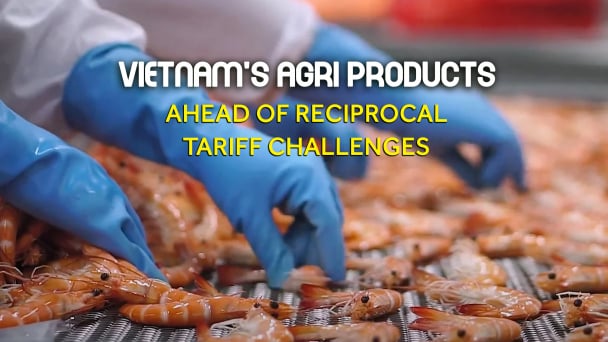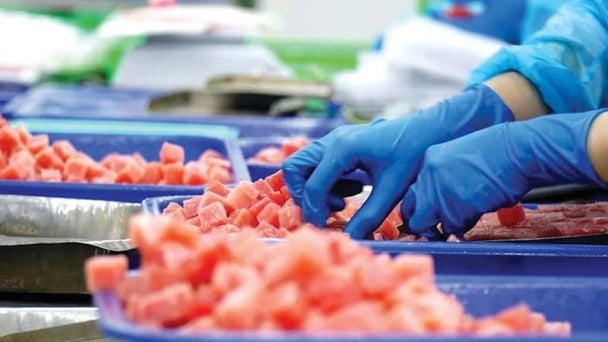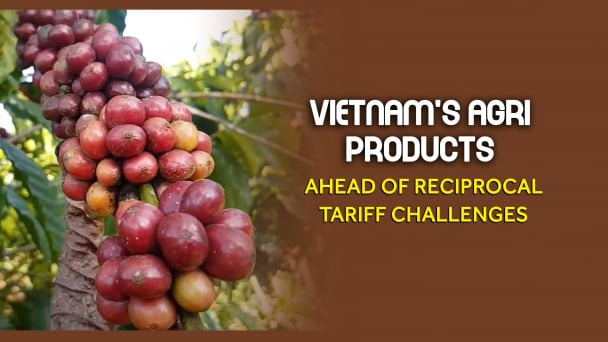May 30, 2025 | 21:41 GMT +7
May 30, 2025 | 21:41 GMT +7
Hotline: 0913.378.918
May 30, 2025 | 21:41 GMT +7
Hotline: 0913.378.918

According to Mr. Nguyen Quoc Manh, Deputy Director of the Department of Crop Production, it is necessary to promote the formation of commodity-scale fruit tree production areas. Photo: Bao Thang.
On October 27, 2022, MARD issued Decision No. 4085/QD-BNN-TT approving the "Project on Developing Key Fruit Trees Until 2025 and 2030," which emphasizes the goal of developing the key fruit tree group sustainably, contributing to increasing export value, promoting agricultural restructuring and socio-economic development, and ensuring people's lives.
The project specifies 14 key fruit types, including: dragon fruit, mango, banana, lychee, longan, orange, grapefruit, pineapple, rambutan, durian, jackfruit, passion fruit, avocado, and custard apple. These are fruit types with large area and production output, contributing mainly to domestic consumption and export growth. Across the country, especially in key agricultural production areas, the above-mentioned fruit trees have been specifically oriented in terms of area scale and output, as well as specific investment priority programs.
Currently, according to the Planning Law, there are no longer specialized plans for each specific crop type. Therefore, Mr. Nguyen Quoc Manh, Deputy Director of the Department of Crop Production, said that the Department's work of advising and directing the development of fruit tree production is focusing on a number of contents, including reorganizing production and forming commodity-scale, concentrated key fruit tree production areas.
Based on the tasks assigned in the Project, provinces and cities determine the type and scale of concentrated fruit tree production areas in provincial planning plans and other related large-scale plans on the basis of promoting the potential and advantages of natural conditions and linking the development of fruit tree growing areas with storage, processing facilities, and consumption markets.
Regarding production scale, Mr. Manh said that the Department of Crop Production proposes to maintain and not increase the area and minimize hot development like durian and citrus trees in recent times, especially in areas where land and irrigation are not suitable without conditions for intensive investment or areas affected by drought and saltwater intrusion.

The Mekong Delta is Vietnam's main fruit-producing region. Photo: Bao Thang.
The locality continues to review fruit tree growing areas according to the orientation of developing concentrated commodity production. For scattered growing areas in unsuitable areas, it is necessary to disseminate and guide farmers to convert crops effectively.
In addition, the Department of Crop Production recommends that people promote linkages in concentrated, key fruit tree production areas. Specifically, link producers, cooperatives, and cooperative groups with purchasing, processing, consuming, and exporting businesses.
Synchronously apply technical measures and scientific and technological advances in production and climate change adaptation, especially good agricultural practices (GAP) that follow the organic direction, reduce costs, protect the environment, ensure productivity, improve quality and food safety, and increase product competitiveness.
To avoid the phenomenon of "good harvest, bad price," relevant parties coordinate to disseminate, promote the implementation of harvest crop spreading, and organize effective harvest crop spreading linkage. Thereby promoting seasonal advantages for consumption, exports of fresh fruit, and supplying raw materials to processing factories.
It is a fact that Vietnam's main fruit granaries are concentrated mainly in the Mekong Delta region. However, the main export market for fruit is China. Transportation and logistics issues are a significant obstacle as Vietnam increases fruit exports to this market.
Agreeing with this opinion, Deputy Director Nguyen Quoc Manh admitted that fresh fruit can easily degrade its design and quality after harvest, depending on the type of fruit. In fresh fruit consumption and export, the transportation stage greatly affects the rate of loss, costs, quality, price, and competitiveness of the product in the import market.

Agricultural extension staff instruct people to bag mangoes in Son La. Photo: Bao Thang.
For many years, transportation in Vietnam has been mainly by road, with advantages in cost and time. Although the Party and State have paid attention to investing in the transportation system in general and the Mekong Delta region in particular, Mr. Manh said that strengthening linkage between production and consumption and minimizing intermediaries in purchasing and transportation still need more attention.
"We should invest in developing cold storage systems and cool houses to preserve fresh fruits, both in concentrated production areas and border gate areas. Besides, promote methods of implementing exported fruit quarantine procedures right in the production area to reduce customs clearance time at border gates," expressed Mr. Manh.
Regarding techniques, harvesting fresh fruit with appropriate ripeness, as well as calculating shipping time to ensure quality and design, also need to be taken into account. The reason is that the fruit has the characteristic of ripening further after harvest.
Therefore, in parallel with the export of fresh fruits, the leader of the Department of Crop Production suggests strengthening negotiations with the Chinese side to be able to export products in the form of frozen fruits. This helps to both reduce pressure on the harvest time and reduce the impact of difficulties from infrastructure and logistics that have not been timely invested and upgraded.

Customs clearance activities at Huu Nghi border gate in Lang Son. Photo: Bao Thang.
In recent instructions, MARD has often emphasized that production must follow market signals as a way to create stable income for people.
Despite many growth opportunities, the agricultural sector in general and fruit products in particular also face many big challenges in terms of supply and demand, prices, and market share. Along with that is fierce competition between producing and exporting countries; technical barriers of importing countries, etc. Therefore, Deputy Director Nguyen Quoc Manh acknowledged that supply and demand factors and product consumption markets need to be given more attention to ensure sustainable and effective production development.
Currently, MARD has been directing units and localities to promote the development of production and consumption development projects and plans. In the immediate future, priority will be given to key products with stable markets. At the same time, strengthen forecasting and information dissemination for producers to understand the market and orient production in terms of type, scale, technical requirements, supply season, etc. Thereby, ensuring effective and appropriate industry development, minimizing spontaneous development following movements and oversupply.
Regarding production organization, Mr. Nguyen Quoc Manh proposed that localities have more programs prioritizing scientific research activities that are synchronous from breeding to perfecting and transferring advanced farming processes and post-harvest technology into production, helping reduce costs, increase competitiveness, and increase production efficiency.
Translated by Thu Huyen

(VAN) Reciprocal tariffs are exerting pressure on U.S. exports, prompting Vietnamese firms to shift their focus to Muslim markets, Thailand, and Brazil.

(VAN) A free booth for two years at Xinfadi, Beijing's largest wholesale market, will be allocated to Vietnam's agricultural products.

(VAN) Vietnamese shrimp exporters are actively looking for alternative markets and accelerating shipments to the United States in response to the pressure of impending reciprocal tariffs. This is occurring during a temporary tariff suspension.

(VAN) The import-export turnover between Vietnam and Singapore rose amid a trade rebound, with machinery, electrical equipment, and fuels making up the majority of the transaction value.

(VAN) Director General of the General Administration of Customs of China, Ms. Sun Mai Jun, has pledged to implement measures that will ease the import process for Vietnamese agricultural products.

(VAN) Although Vietnam is still increasing its coffee exports, the industry is currently in the process of determining market strategies in response to the U.S. imposition of reciprocal tariffs.

(VAN) With rising demand in Muslim-majority countries, Halal certification is becoming a critical passport for Vietnamese agricultural products seeking sustainable market access and consumer trust in the Middle East and Africa.